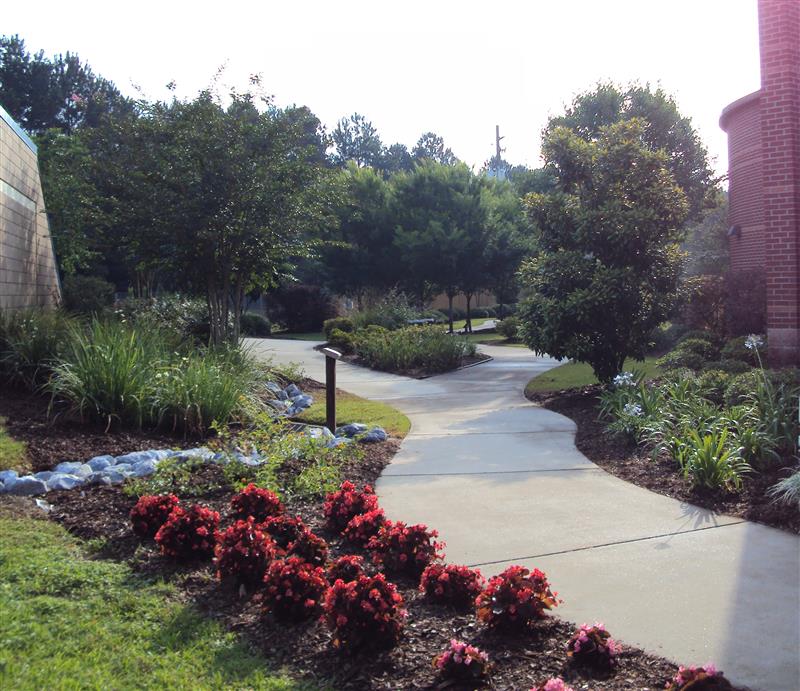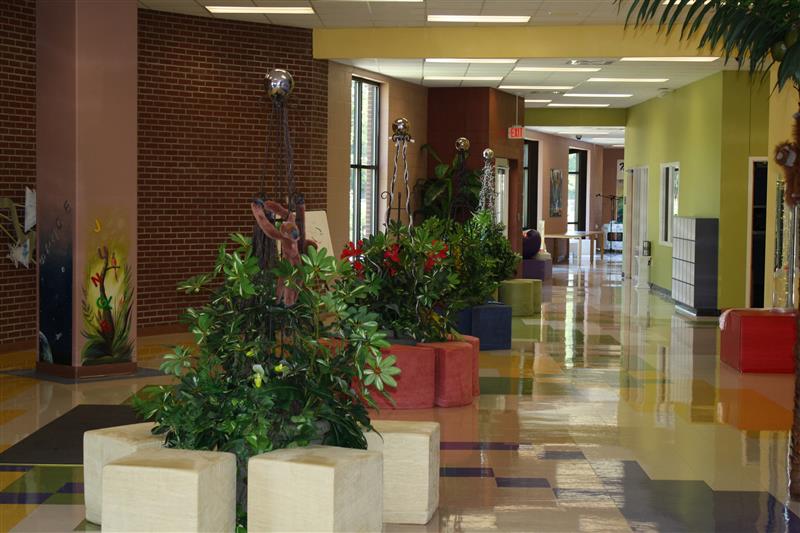-
The Lacey A. Collier Sensory Complex
Completed in the fall of 2005, the Lacey A. Collier Sensory Complex was created in order to provide a higher quality of education for our diverse population of students. Centrally located on the school’s campus, this facility is composed of an atrium, four large themed multisensory rooms, a sensory corridor and a sensory garden. Students utilize the areas individually, in small groups or as a whole class depending on the needs of each student. This multi-sensory complex was designed based on the Snoezelen® (pronounced SNOO-zuh-len) concept developed in the Netherlands over 30 years ago. The word “snoezelen” is a combination of two Dutch words meaning “to explore” and “to relax”, and a Snoezelen® multi-sensory environment employs colors, lights, textures, and music to illicit a variety of responses from individuals with disabilities.
Here at Escambia Westgate School, the Lacey A. Collier Sensory Complex is used to address sensory needs, increase functional communication, develop gross and fine motor skills, de-escalate inappropriate behaviors, and increase desired learning behaviors. The school staff has observed many positive student responses from use of the multisensory environment. In research conducted by the University of West Florida, a random sampling of 50 students demonstrated increased engagement and focus in the classroom and the students exhibiting self-injurious behaviors showed a significant reduction in these behaviors following sessions in the multisensory environments. By eliciting responses that traditional settings cannot, the Lacey A. Collier Sensory Complex has provided Escambia Westgate School with a way to address the unique needs of our students by providing them with the power to make choices, explore, and communicate.
Research
Thompson, C. (2011) Multi-sensory intervention observational research. International Journal of Special Education, 26(1), 202-218.



